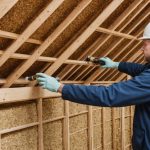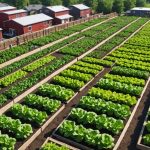Overview of Eco-Friendly Insulation
Eco-friendly insulation plays a crucial role in reducing energy consumption and enhancing sustainability in the UK housing sector. Such insulation utilises materials that lower environmental impact and provide enhanced energy efficiency. Homeowners achieve substantial benefits: financial savings, reduced carbon footprints, and improved home comfort.
Eco-friendly insulation typically includes materials sourced from sustainable origins. Installing these materials not only cuts down on energy bills but also decreases reliance on less sustainable insulation options. The adaptation of sustainable materials like sheep wool, hemp, and recycled denim serves as a testament to their viability. Their effectiveness emerges not only from their insulating properties but also from their ability to regulate moisture and maintain indoor temperatures.
Topic to read : Maximizing Sunlight: Cutting-Edge Home Design Strategies for Northern Climates
Another key dimension is energy efficiency. Eco-friendly options possess superior insulating capacity, offering better thermal performance without compromising environmental integrity. Adapting these materials into homes signifies a shift toward more responsible and sustainable living choices within the UK’s challenging climates.
Commonly used materials in eco-friendly insulation include natural fibres and recycled products. These are valued not only for their environmental benefits but also for their outstanding insulating properties. By using these materials, homeowners actively contribute to a more sustainable future while enhancing their own comfort.
Also to discover : Eco-Transforming Real Estate: Innovative Strategies for Integrating Sustainable Urban Farming Practices
Top Eco-Friendly Insulation Techniques for UK Weather
Selecting the right insulation techniques is crucial for achieving optimal energy efficiency and comfort in the UK, where climate adaptability is essential. Natural fibres like sheep wool, hemp, and cotton offer excellent thermal regulation, absorbing and releasing moisture without losing their insulating properties. These materials are particularly adept at maintaining indoor temperature, providing year-round comfort in both warm and cold climates.
Recycled materials present another eco-friendly option. Insulations made from denim, cellulose, and glass leverage waste products’ inherent properties to provide effective thermal barriers. For instance, cellulose retains warmth excellently due to its dense composition, offering a high level of insulation comparable to traditional materials but without the environmental drawbacks.
Advanced options like aerogel and vacuum insulation panels boast impressive energy efficiency ratings. Despite their higher upfront costs, these solutions deliver unparalleled insulation performance, suiting homes particularly in regions with extreme temperatures. In the UK, several projects have successfully integrated these materials, showcasing their ability to minimise heat loss while enhancing occupant comfort.
Whether through natural, recycled, or advanced materials, employing efficient insulation techniques that align with the UK’s diverse climate conditions can substantially improve energy efficiency and long-term savings.
Cost Considerations for Eco-Friendly Insulation
Understanding the insulation cost is vital for making an informed decision about eco-friendly insulation. While the initial investment can appear high, particularly for advanced materials, the long-term savings on energy bills often justify the expenditure. Many homeowners find that these materials pay for themselves over time due to the substantial decrease in energy consumption.
Fortunately, those seeking budget-conscious options can explore grants and incentives offered for eco-friendly home improvements. These schemes can significantly reduce the upfront cost, making sustainable solutions more accessible. The UK government and various organisations provide such incentives, encouraging homeowners to adopt energy-efficient practices and invest in sustainable materials.
When evaluating cost-effectiveness, it’s essential to compare the longevity and performance of different eco-friendly insulation materials. Options like sheep wool and recycled denim are not only affordable but also provide excellent thermal regulation, ensuring comfort across seasons.
Considering these factors can empower homeowners to select the most suitable and financially viable eco-friendly insulation solution. By balancing initial costs with potential energy savings and available financial aids, homeowners can ensure the adoption of environmentally responsible, cost-effective insulation.
Installation Tips for Eco-Friendly Insulation
Successfully integrating eco-friendly insulation into your home involves careful planning and execution. These insulation installation tips will ensure optimal efficiency and performance, whether you’re considering DIY or professional services.
DIY Approaches
For those considering a hands-on approach, understanding the right steps is essential. Begin by selecting the most suitable sustainable materials for your climate and home type. Ensure accurate measurements of the targeted space to purchase the correct amount of insulation. Key tools include a utility knife, safety goggles, and gloves. Prioritise safety by adhering to handling and installation guidelines, particularly when dealing with fibrous materials like sheep wool or hemp. Avoiding common mistakes is crucial—ensure no gaps are left between sections and keep insulation away from potential moisture sources to prevent mould development.
Hiring Professionals
In cases where the task seems daunting, hiring a professional might be the wiser choice. Opt for contractors who specialise in eco-friendly insulation. A reputable professional provides insights into the most effective materials and techniques tailored for UK climates. While DIY saves upfront costs, professional installation guarantees precision and maximised energy efficiency, potentially offering greater long-term savings. Consider this trade-off to make an informed decision aligned with your needs and budget.
Real-Life Case Studies and Comparisons
Exploring real-life case studies reveals the substantial impact of eco-friendly insulation on energy efficiency. Homeowners have documented notable changes in comfort and cost savings after incorporating sustainable materials.
Before and After Analysis
Before installing eco-friendly insulation, many homes faced challenges like high energy bills and inconsistent indoor temperatures. However, post-installation, users report a dramatic drop in energy consumption. For instance, a typical UK household reduced heating expenses by approximately 20% within a year of installing recycled denim insulation.
User Testimonials
Feedback from users highlights not only savings but also enhanced comfort levels. One homeowner in Yorkshire described their experience with sheep wool insulation as transformative, noting improved humidity control and more stable temperatures. Another user praised the effectiveness of aerogel panels, citing significant reductions in heat loss during winter.
Performance Comparisons
Comparing various eco-friendly insulation methods demonstrates diverse benefits. Natural fibres, like hemp, excel in moisture regulation, while advanced solutions like vacuum panels offer superior thermal resistance but at a higher cost. Each method excels in specific areas, enabling homeowners to choose options best suited to their needs.
These case studies and user testimonials confirm the profound benefits of opting for eco-friendly insulation.











